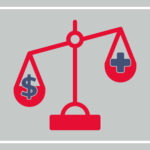Published by
Jarrard’s 2024 Consumer Survey gives us some numbers that demonstrate the magnitude of patients that have yet to embrace online scheduling. 43% of respondents have never made an appointment online (and 3% aren’t sure which probably leans to no). That may be surprising to those of us that have spent years embracing digital transformation. We so often hear online scheduling referred to as “table stakes” that you’d be forgiven for assuming its usage was far more ubiquitous.
Those same respondents were asked if the options to schedule (Computer, Smart Phone, Walk-In, and Telephone) were all available, which would they use. A whopping 50% responded telephone – tying the other 3 options combined. Another sobering statistic. Other industries have had much more success embracing digital transformation – would you even know what number to call to book a flight, make a dinner reservation, or reserve an AirBnb in 2024?
You may look at this data and think “if only we had better digital tools or experiences we could get these numbers up.” It’s an understandable first thought, but digging into the data some more we can see why patients that have never scheduled online say they haven’t. While we can’t reliably depend on self-reporting for exact details in any survey, some themes do emerge: Awareness, Operations, and Ease. The magnitude of where responses fall into these categories and how little the actual technology comes into play is shocking. Let’s break it down.
Awareness
21% of respondents said they did not schedule online because they were unfamiliar with online scheduling. Another 22% responded that their providers don’t offer it. While that may be true in some cases – and it’s hard to pin down the exact percentage of providers that do not provide online scheduling options – a big chunk of that 22% likely see providers that offer it, but they are unaware. This is by far the biggest category of responses.
That’s a frustrating statistic for those working hard to lay the infrastructure for digital transformation in healthcare. The greatest online experience in the world is worthless if no one knows about it.
Operations
17% said they opted against online scheduling because they couldn’t get an appointment soon enough while 8% said they were unsure what type of appointment they needed. While a smaller slice than awareness, 25% in total is still significant. The struggle to make enough appointments available of course pre-dates online scheduling, but there are added wrinkles when patients are the ones doing the scheduling.

First up is access to appointments. Many providers understandably like to hold some appointments in reserve each day for emergent cases. They may not be made available to a patient scheduling online. Once that same patient calls the office they get ahold of someone who sees the full schedule and is able to make a judgment call on whether or not their condition warrants taking one of these reserved slots. The intention here is noble, but from a patient’s perspective, this experience teaches them that they have to call to “get the good stuff” and they lose trust in the online option.
Second is choosing the type of appointment. When a trained member of the staff is doing the scheduling they know the nuances of what type of appointment is needed for a given situation. A patient doesn’t know and likely doesn’t care if they need to be seen for a 15 Minute Wellness Visit or a 20 Minute Physical Examination – they just want their rash to go away. If the phrase “Visit Types” makes your eyeball twitch, you’re not alone. Prior to online scheduling, many systems created lists of Visit Types in their EHRs that numbered in the hundreds or thousands. No patient could sort through or make sense of them. Looking at the list in totality few, if any, people within an organization could explain them all.
Third is similar to visit types, but just good old-fashioned variability. Using a single system to book appointments for providers that have different preferences on how many patients are seen or what mix of cases can be handled in a day is tricky. The more options there are the harder it is for a single system to accommodate and harder for patients to understand. As we saw with patients in the first example, this difficulty can drive providers away from trusting or using digital tools.
All of these present challenges for those working on digital transformation. A smooth interface isn’t used, and gets destroyed in app ratings, if it cannot ultimately give the patient what they want.
Ease
Only 16% of respondents mentioned reasons that appear to be strictly technology-based: 4% Can’t remember login, 4% Don’t have a computer/internet, 8% Platform isn’t effective. Digital teams can implement features that help patients with logins, make mobile-friendly apps for those who have a smartphone but no other device, or alleviate friction points that keep patients from finding the experience effective. This is a pretty small group of folks that digital teams alone influence.
Bringing it Together
Categorizing the reasons patients aren’t embracing online scheduling helps us understand the various factors that come into play with this discussion, but should not be used to assign blame. Marketing wants to entice patients in and keep them coming back for more. Operations want their providers to have full schedules. Providers want to heal as many patients as possible. Digital teams want to support it all. Everyone wants to do their part, but until someone takes a step back and sees the totality of the issue they won’t understand how their part fits into the whole.
The most effective way to do this is to take all the teams through a patient’s journey. Anyone can sympathize with being a patient and seeking care. Seeing how online scheduling could help with struggles Marketing is hearing potential patients have with access might inspire ideas on a campaign. Seeing the long list of Visit Types presented to a patient might incent Operations to do some overdue consolidation. Hearing what the different Visit Types mean might allow the Digital Team to design an experience that guides the patient to the right answer on a streamlined list.
The biggest hurdle is often a logistical one. How do you bring these folks together and present the information in a way everyone can understand? Or have them participate in generating the information and coming to their own realizations? One way is an Experience Blueprint. This allows an organization to look at a patient’s journey – such as online scheduling – from beginning to end, note the people and technology involved in each step, and brainstorm solutions. If you’d like to take the steps needed to increase your online scheduling engagement let’s talk.
Share:
Categories
tags
Related Posts


The Great Big Budget Cut: Prioritization


